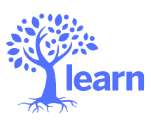Physics
The following lessons give students a solid background of the needed math and science concepts that are frequently used in Physics. They review and consolidate useful topics from several high school levels that are required for the understanding of Physics. Several of the lessons also include online simulations or references to help master the concepts.
PLEASE NOTE: No sign-in is required to view these lessons. Simply click the arrow on the lower left-hand side of the slide to play. Use the arrows on the lower right-hand side of the slide to advance the slides.
LEARN Design and Development Team: Author/Lead Teacher: Natalie Dahlstedt, BEd, MES; Editor: Steve Rossy, MD; and Instructional Designer: Kristine Thibeault, MEd
Frames of Reference
This video introduces the concept of Frames of Reference as used in the Grade 11 Physics program. It presents several tools that are useful to describe a motion in relation to a position. Mastering this concept is essential for students as it is an integral part of the Dynamics and Kinematics units of the course.
At the end of this lesson, you will be able to:
- Use a frame of reference
- Describe the trajectory of a moving object
- Use a Cartesian plane
- Use cardinal points from a compass rose
Analysis of Graphs
This short video reviews graphs: how to draw a complete graph, how to analyze and to interpret them with the help of mathematical knowledge. It also introduces the ways to find average and instantaneous velocity. Graphs are studied in math and used to present results in science, hence the importance of understanding the meaning of the different parameters of a graph.
At the end of this lesson you will be able to:
- Recognize a variety of graphs
- Analyze data from a graph
Scientific Notation
This video reviews how to transform numbers into scientific notation, which is a useful tool when studying Physics and other sciences that demand calculations. The presentation of a step by step method on how to solve various operations using scientific notation is supported by examples that students can also try on their own before watching the solution.
At the end of this lesson you will be able to:
- Perform basic math operations jusing scientific notation
S.I. Units and Their Conversion
Being able to convert S.I. Units is a useful skill that applies to math as well as science. Mastering the ability to convert from one unit to another is essential in several situations.
At the end of this lesson you will be able to:
- Use unit submultiples and do their conversion
Related Textbook Pages:
Quantum Physics, Third Year of Secondary Cycle Two, Chenelière Éducation, 2011, pp 169-174
Additional Resoures:
Khan Academy: Convert Units Practice
Geometry and Trigonometry
This video reviews some important notions related to geometry and trigonometry as seen in grades 7 to 10. These notions have to be mastered in order to be able to apply them to dynamics and kinematics situations found in the Physics course.
At the end of this lesson you will be able to:
- Name trianges and angles
- Use the Pythagorean theorem
- Use basic trigonometry
Related Textbook Pages:
Quantum Physics, Third Year of Secondary Cycle Two, Chenelière Éducation, 2011, pp 404-405
Additional Resources:
Math Antics: The Pythagorean Theorem
A Serano Production: Right Triange Trigonometry
Vector and Scalar quantities
The introduction of vector quantities, in comparison to scalar quantities, is presented in this video. The representation of vectors, along with two methods of adding vectors is also part of this lesson. Step by step instructions of the graphical method and the components method allow students to understand and apply vector addition and find the magnitude and direction of a resultant vector.
At the end of this lesson you will be able to:
- Describe the difference between scarlar and vector quantities
- Represent vector quantities appropriately
- Use the different methods to add vectors
- Decompose vectors into x and y components
- Find the resultant vector
Related Textbook Pages:
Quantum Physics, Third Year of Secondary Cycle Two, Chenelière Éducation, 2011, pp 176-195
Additional Resources:
The Physics Classroom: Vector Addition Interactive (vector addition using graphical method)
The Physics Classroom: Addition Concept Builder (vector addition using components method)

 FACEBOOK
FACEBOOK TWITTER
TWITTER
 INSTAGRAM
INSTAGRAM LINKEDIN
LINKEDIN